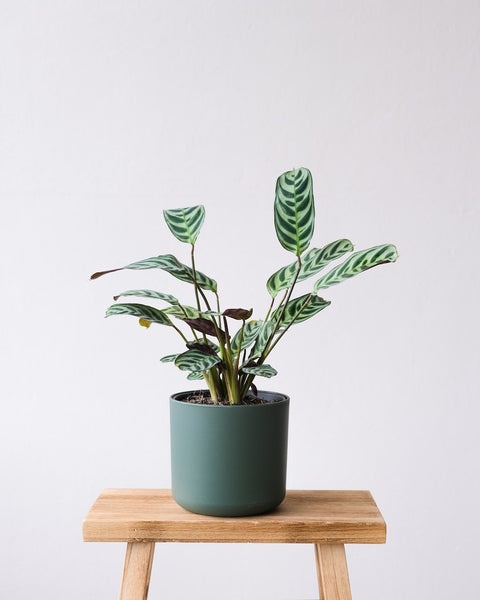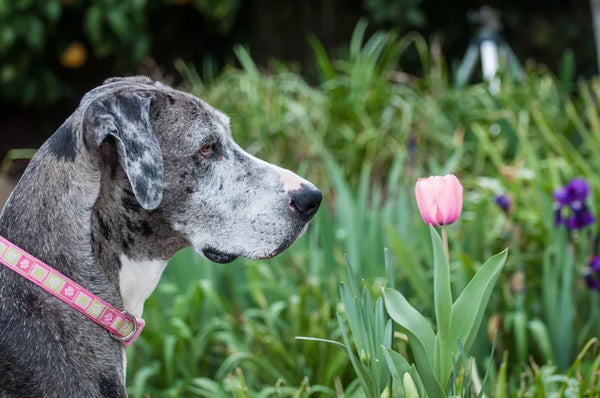Plants Safe for Dogs: Creating a Dog-Friendly Garden

Image Source: Unsplash
As dog owners, it's important for us to create a safe and enjoyable environment for our furry friends, both inside and outside the home. When it comes to our gardens, we want to ensure that the plants we choose are not only beautiful but also safe for our dogs. In this comprehensive guide, we will explore a variety of dog-safe plants and provide valuable tips for creating a dog-friendly garden.
Why Choosing Dog-Safe Plants Matters
Before we delve into the specific plants that are safe for dogs, let's understand why it's crucial to choose dog-friendly plants in the first place. Many common garden plants can be toxic to dogs if ingested, causing symptoms ranging from mild gastrointestinal upset to severe poisoning. As responsible pet owners, it's our duty to minimize the risk of our dogs coming into contact with toxic plants.
Creating a Stimulating Garden Environment
One of the key aspects of a dog-friendly garden is creating a stimulating environment that keeps our dogs engaged and entertained. Just like humans, dogs enjoy exploring different textures and scents. By incorporating a variety of plants and features, we can provide a sensory-rich experience for our furry friends.
-
Designated Paths and Play Areas: Creating clearly defined paths and designated play areas within the garden helps dogs navigate and understand their surroundings. It also prevents them from trampling delicate plants. Consider using materials like gravel, mulch, or stepping stones to create distinct pathways.
-
Texture and Movement: Dogs are naturally curious and enjoy investigating different textures. Incorporate plants with varying textures, such as ornamental grasses and salix (willow), which sway and dance in the breeze. These plants provide visual interest and tactile stimulation for our canine companions.
-
Entertainment and Exercise: To keep our dogs mentally and physically stimulated, include features like agility equipment, toys, and interactive elements in the garden. These additions can encourage playfulness and provide outlets for energy expenditure.
Robust and Resilient Plant Choices
When choosing plants for a dog-friendly garden, it's important to opt for varieties that can withstand the occasional rough play or digging by our furry friends. Large, established perennials and sturdy shrubs are ideal choices, as they can withstand dogs running through the garden without being easily damaged. Here are some robust plant options to consider:
-
Nepeta: Also known as catmint, nepeta is a tough and resilient plant that can handle the antics of playful dogs. It produces beautiful spikes of lavender-blue flowers and is an attractive addition to any garden.
-
Astilbe: With its feathery plumes of flowers in shades of pink, white, and red, astilbe adds a splash of color to the garden. It's a hardy perennial that can tolerate some roughhousing from our canine companions.
-
Hardy Geranium: Geraniums, also called cranesbill, are reliable and resilient plants that come in a variety of colors. They can withstand moderate foot traffic and are a great choice for dog-friendly gardens.
Avoiding Toxic Plants
To ensure the safety of our dogs, it's crucial to be aware of plants that are toxic to them and avoid including them in our gardens. Here is a list of common garden plants that are potentially toxic to dogs:
-
Azalea and Rhododendron: These popular flowering shrubs contain toxins that can cause vomiting, diarrhea, and even coma if ingested by dogs. It's best to choose alternative plants for spring and autumn color in dog-friendly gardens.
-
Spring-Flowering Bulbs: Bulbs like crocus, daffodil, and tulips can be harmful if dogs dig them up and consume them. To protect both your bulbs and your furry friends, consider burying a sheet of wire mesh over the planting hole.
-
Lily of the Valley: This delicate-looking plant contains cardiac glycosides that can be highly toxic to dogs. Ingestion can lead to symptoms such as vomiting, diarrhea, and even heart problems. It's best to avoid planting lily of the valley in dog-friendly gardens.
Safe and Beautiful Alternatives
Now that we know which plants to avoid, let's explore some safe and beautiful alternatives that will add color and beauty to our dog-friendly gardens. These plants are not only non-toxic to dogs but also provide visual appeal and often attract beneficial insects like bees and butterflies.
-
Camellia: Camellias are evergreen shrubs that produce stunning flowers in various colors. They are safe for dogs and can be a suitable replacement for azaleas. Consider planting camellias for their vibrant blooms and year-round greenery.
-
Rosemary: This fragrant herb is not only safe for dogs but also serves as a versatile culinary ingredient. Rosemary plants can be pruned into neat shapes or allowed to grow freely, adding both visual interest and a delightful aroma to the garden.
-
Snapdragons: These charming flowers come in a variety of colors and attract butterflies and hummingbirds. Snapdragons are safe for dogs and can add a playful touch to any garden. Plant them in sunny spots for best results.
Creating a Secure Garden Environment
In addition to choosing dog-safe plants, it's important to create a secure garden environment to prevent our dogs from escaping or accessing potentially harmful areas. Here are some tips for ensuring the safety and security of our furry friends:
-
Secure Fencing: Install a sturdy and secure fence around the perimeter of your garden to prevent dogs from escaping. Make sure the fence is at least 6 feet high if you have medium-sized dogs or breeds known for their jumping abilities.
-
Gates and Boundaries: Keep gates securely closed at all times to prevent accidental escapes. Additionally, consider creating clearly defined boundaries within the garden using low-growing hedges or other physical barriers to keep dogs away from sensitive areas.
-
Designated Digging Areas: Dogs love to dig, so why not provide them with a designated digging area? Fill a sandbox or a specific section of the garden with sand or bark chips where your dog can freely indulge in their digging instincts.
Maintaining a Healthy Garden
To keep our dog-friendly gardens in optimal condition, it's important to implement proper maintenance routines and avoid using chemicals that could be harmful to our furry friends. Here are some guidelines for maintaining a healthy garden environment:
-
Organic Pest Control: Instead of using chemical pesticides and herbicides, opt for organic and pet-safe alternatives. Natural pest control methods like companion planting, physical barriers, and beneficial insects can help keep your garden free from pests without posing a risk to your dog's health.
-
Compost Bins: If you have a compost bin in your garden, ensure that it is securely closed to prevent dogs from accessing potentially harmful food scraps. Certain foods like avocados, grapes, and onions can be toxic to dogs, so it's essential to keep them out of reach.
-
Water Features: Dogs may be tempted to drink from ponds or water features in the garden. Avoid adding additives or chemicals to these water sources, as they can be harmful if ingested by dogs. Provide fresh drinking water for your furry friends in a separate, designated area.
Taking Precautions in the Garden
While we strive to create a safe environment for our dogs, accidents can still happen. It's important to be vigilant and take immediate action if we suspect our dogs have come into contact with potentially toxic plants or have ingested any harmful substances. Here are some precautions to keep in mind:
-
Know the Symptoms: Familiarize yourself with the symptoms of plant poisoning in dogs, such as vomiting, diarrhea, difficulty breathing, or unusual behavior. If you notice any of these signs, contact your veterinarian immediately.
-
Emergency Vet Visits: If you suspect your dog has ingested a toxic plant or harmful substance, don't hesitate to seek emergency veterinary care. Prompt treatment can make a significant difference in your dog's recovery.
-
Pet Insurance: Consider investing in pet insurance to provide financial protection in case of unexpected accidents or illnesses. Having insurance can give you peace of mind knowing that your dog's medical expenses will be covered.
Conclusion
Creating a dog-friendly garden is a wonderful way to provide a safe and enjoyable outdoor space for our canine companions. By choosing dog-safe plants, creating a stimulating environment, and implementing necessary precautions, we can ensure that our dogs can roam freely and safely in our gardens. Remember to consult with your veterinarian if you have any concerns about specific plants or if you notice any unusual symptoms in your dog. With careful planning and consideration, you can create a beautiful garden that both you and your furry friend will love.

Additional Information:
- Great Danes, Retrievers, and German Shepherds are large dog breeds known for their active nature and sometimes destructive behavior. When creating a dog-friendly garden for these breeds, it's important to choose robust plants that can withstand their energy and provide ample space for them to play and explore.
- Incorporating dog-friendly features like shade structures, water bowls, and comfortable resting areas can enhance the overall comfort and enjoyment of your dog in the garden.
- Regularly inspect your garden for any potential hazards, such as sharp objects, toxic substances, or plants that may be harmful to dogs. Take proactive measures to eliminate or mitigate these risks to ensure the safety of your furry friend.
